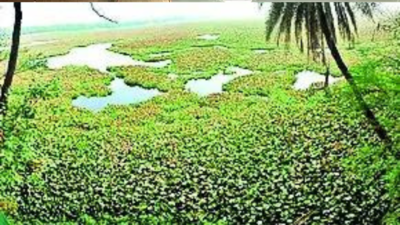
New Delhi: India increases its numbers Ramsar wetlands – a global label for protected wetlands of international importance – has increased from 26 to 85 in the past 10 years and will soon bring that number to 100.
The announcement was made by Minister of State for Environment Kirti Vardhan Singh on Tuesday while delivering a national statement at the ongoing 16th session of the United Nations Convention on Biological Diversity (sixteenth meeting of the conference of the parties) in Cali, Colombia.
India currently tops the list of Asian countries with the largest number of such designated wetlands on the African continent and ranks third globally after the United Kingdom (175) and Mexico (144). There are 2,522 such sites worldwide.
“Since 2014, the number of Ramsar sites in India has increased from 26 to 85, and this number will soon reach 100,” said Singh. biodiversity.
Wetlands are land areas temporarily/seasonally or permanently covered by water that play an important role in the hydrological cycle and flood control, are a good source of water supply, provide food and fiber, and provide shelter for migratory birds.
The global convention to protect such ecosystems was adopted in Ramsar, Iran, in 1971, providing a framework for the conservation and wise use of wetlands and their resources worldwide.
Singh reiterated India’s commitment to protecting domestic and global biodiversity for current and future generations, stressing the need for “financial resources, technology and capacity building” as well as the “speed, scope and scale” required for countries to implement the plan in their respective national biodiversity. Diversity Strategy and Action Plan (NBSAP).
The minister also informed attendees of India’s plans to launch an updated National Biodiversity Strategy and Action Plan (NBSAP) in Cali on Wednesday, sharing a blueprint on how the country plans to address biodiversity loss in a global framework aimed at Halt and reverse nature loss by 2030.







